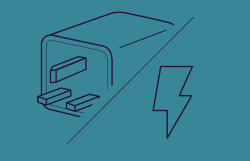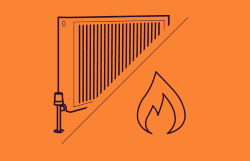In the complex ecosystem of the energy industry, the reliable and efficient transportation of electricity is paramount. The role of an energy transporter is crucial in ensuring that electricity generated from various sources reaches end-users safely and seamlessly. In this article, we will delve into the role of an energy transporter, highlighting its significance in the power grid, its responsibilities, and the challenges it faces in maintaining a robust and resilient energy transmission infrastructure.
Understanding the Role of an Energy Transporter
An energy transporter, also known as a transmission system operator (TSO) or grid operator, is an entity responsible for the high-voltage transmission of electricity over a wide area. The primary function of an energy transporter is to manage and operate the transmission network, which serves as the backbone of the power grid, facilitating the efficient movement of electricity from power generation facilities to distribution networks and ultimately to consumers.
Responsibilities of an Energy Transporter:
- Grid Operation and Control:
- An energy transporter is responsible for the reliable operation and control of the transmission grid. This involves monitoring the flow of electricity, ensuring grid stability, and maintaining the balance between electricity generation and consumption. By continuously monitoring the grid’s parameters, such as voltage, frequency, and load, the energy transporter takes proactive measures to prevent disruptions and maintain a stable power supply.
- Planning and Expansion of Transmission Infrastructure:
- Another critical responsibility of an energy transporter is the long-term planning and expansion of the transmission infrastructure. This involves analyzing electricity demand forecasts, identifying transmission bottlenecks, and designing new transmission lines or upgrading existing infrastructure to accommodate the growing energy needs. By strategically expanding the transmission network, the energy transporter ensures the reliable and efficient delivery of electricity to meet the demands of consumers and the market.
- Market Facilitation:
- Energy transporters often play a crucial role in facilitating the electricity market. They provide access to the transmission grid for various market participants, including power generators, wholesale electricity traders, and distribution companies. By enabling fair and non-discriminatory access to the transmission infrastructure, energy transporters promote competition, facilitate efficient energy trading, and support the integration of renewable energy sources into the grid.
- Grid Planning and Security:
- Energy transporters engage in comprehensive grid planning activities to ensure the security and resilience of the transmission network. They assess potential risks, conduct reliability studies, and develop contingency plans to handle emergencies or unforeseen events. By actively managing grid security, energy transporters minimize the potential for disruptions, safeguard critical infrastructure, and enhance the overall reliability of the power grid.
Challenges Faced by Energy Transporters:
- Grid Decentralization and Renewable Integration:
- The increasing decentralization of energy generation, particularly with the integration of renewable energy sources, presents challenges for energy transporters. Distributed generation from sources such as solar panels and wind turbines requires careful management to maintain grid stability and balance supply and demand. Energy transporters must adapt their operational strategies to accommodate fluctuating inputs from these distributed resources.
- Aging Infrastructure and Modernization:
- Many transmission infrastructures around the world are aging and in need of modernization. Energy transporters face the challenge of upgrading or replacing existing infrastructure to improve efficiency, enhance grid resilience, and accommodate the changing energy landscape. This task often requires significant investments and coordination with other stakeholders.
- Grid Interconnection and Cross-Border Challenges:
- In interconnected grids or grids spanning multiple regions or countries, energy transporters face the challenge of seamless grid interconnection and cross-border coordination. Harmonizing operational procedures, ensuring technical compatibility, and addressing regulatory differences are crucial for efficient cross-border electricity exchange and grid reliability.
- Cybersecurity and Grid Resilience:
- As critical infrastructure, the transmission grid is vulnerable to cyber threats and physical disruptions. Energy transporters must invest in robust cybersecurity measures to protect the grid from potential attacks. Additionally, they need to develop contingency plans and resilience strategies to respond effectively to natural disasters, extreme weather events, or other emergencies that could impact grid operations.




